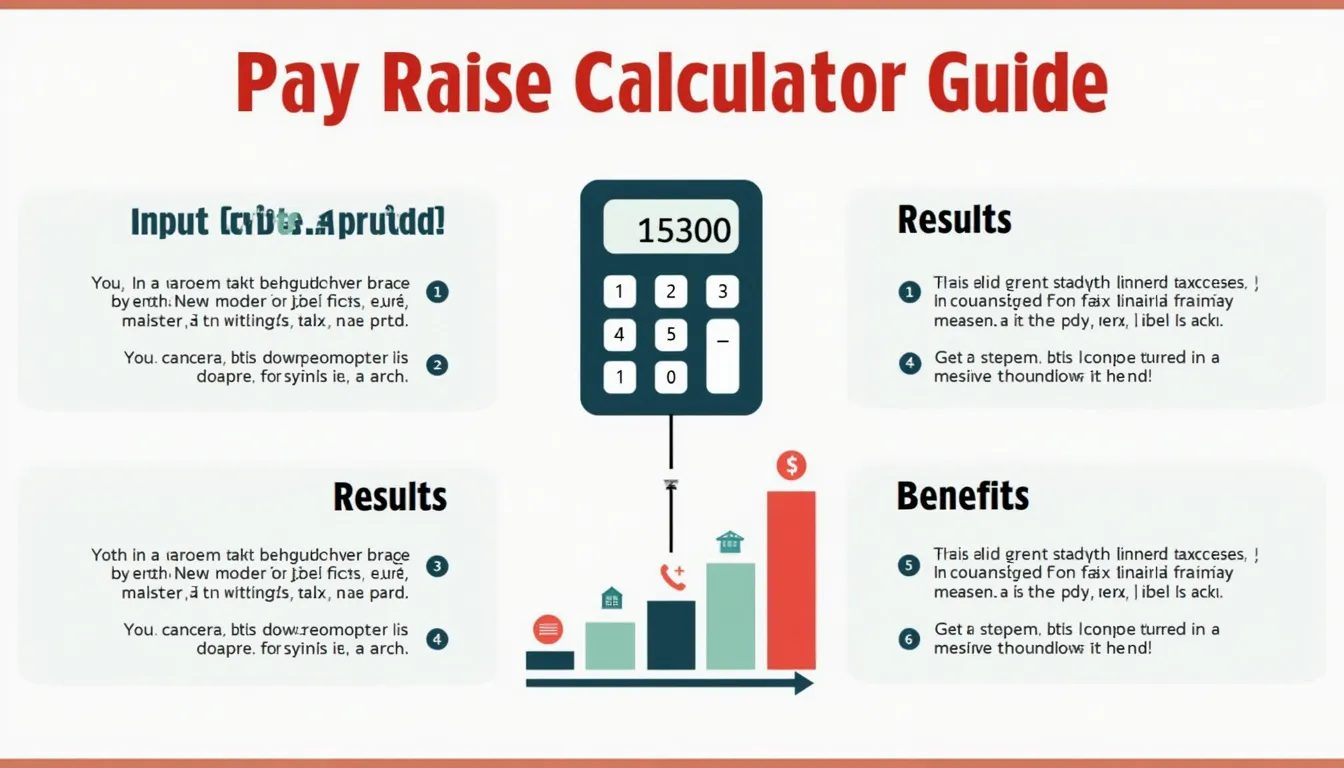Pay Raise Calculator
Is this tool helpful?
How to use the tool
- Current Annual Salary – type your gross pay, e.g., $63,750 or $98,200. Accurate numbers keep every result trustworthy.
-
Raise Type – pick Percentage or Amount.
- Percentage example: 4.8 %
- Amount example: $6,250
- Pay Frequency – choose how you’re actually paid (Monthly, Bi-weekly, Weekly, Hourly, Annual). Example selections: Bi-weekly, Hourly.
- Tax Rate (Optional) – enter an estimated combined rate, e.g., 22 % or 17.5 %, to view net income.
- Work Hours per Week (Optional) – adjust from the 40-hour default; try 35 or 45 for part-time or overtime scenarios.
- Press Calculate. Review the new salary, dollar/percent increase, net pay, and frequency breakdowns on screen and in the chart.
Underlying formulas
1. Percentage raise $$\text{New Salary}= \text{Current Salary}\left(1+ rac{\text{Raise %}}{100}\right)$$
2. Amount raise $$\text{New Salary}= \text{Current Salary}+ \text{Raise Amount}$$
3. Salary increase $$\text{Increase}= \text{New Salary}-\text{Current Salary}$$
4. Percent growth $$\text{Percent Increase}= rac{\text{Increase}}{\text{Current Salary}}\times100$$
5. Net salary $$\text{Net Salary}= \text{New Salary}\left(1- rac{\text{Tax Rate}}{100}\right)$$
Worked examples
- Percentage case: $63,750 with a 4.8 % raise → New salary = $66,810; increase = $3,060.
- Amount case: $98,200 with a $6,250 raise → New salary = $104,450; percent increase ≈ 6.37 %.
- Net pay: $66,810 at 22 % tax → Net = $52,112.
Quick-Facts
- Average U.S. full-time wage: $59,384/year (BLS, 2024).
- Typical merit raise range: 3 – 5 % (SHRM, 2023).
- There are 26 bi-weekly pay periods per year (IRS Publication 15-B, 2024).
- Standard work year equals 2,080 hours (U.S. OPM Fact Sheet, 2024).
FAQ
What is a pay-raise calculator?
The calculator is an online tool that converts your raise into new gross and net earnings across multiple pay periods.
How do I choose between percentage and amount?
Select percentage when the employer offers a rate, like 5 %. Use amount for a flat figure, like $4,000.
Does it include overtime?
No. Enter your standard hours; overtime requires manual adjustments.
Which taxes are reflected?
The optional tax rate represents combined federal, state, and payroll taxes. Adjust the percentage to match your situation.
Can HR export the results?
Copy the displayed figures or screenshot the chart; no built-in export exists.
Is the calculation accurate for bonuses?
The formulas cover base salary raises only. Bonuses use different tax withholding and should be calculated separately (IRS Notice 1036, 2024).
Important Disclaimer
The calculations, results, and content provided by our tools are not guaranteed to be accurate, complete, or reliable. Users are responsible for verifying and interpreting the results. Our content and tools may contain errors, biases, or inconsistencies. Do not enter personal data, sensitive information, or personally identifiable information in our web forms or tools. Such data entry violates our terms of service and may result in unauthorized disclosure to third parties. We reserve the right to save inputs and outputs from our tools for the purposes of error debugging, bias identification, and performance improvement. External companies providing AI models used in our tools may also save and process data in accordance with their own policies. By using our tools, you consent to this data collection and processing. We reserve the right to limit the usage of our tools based on current usability factors.







